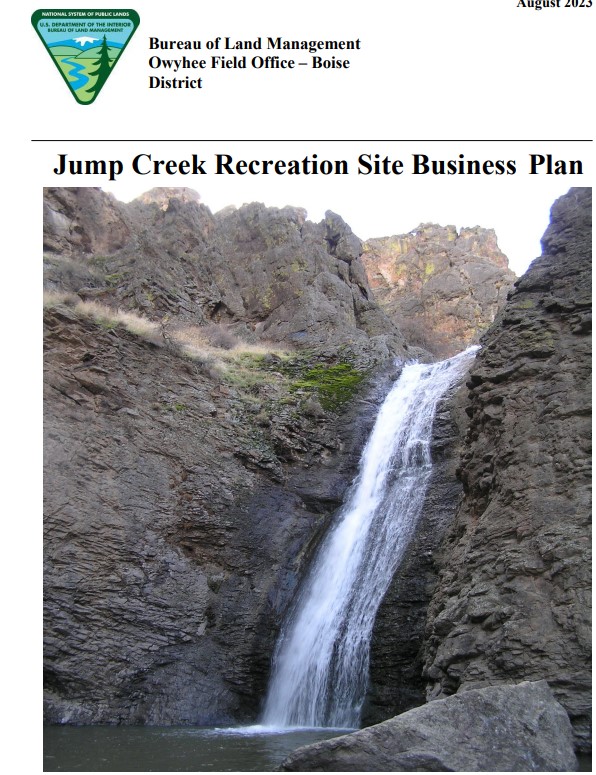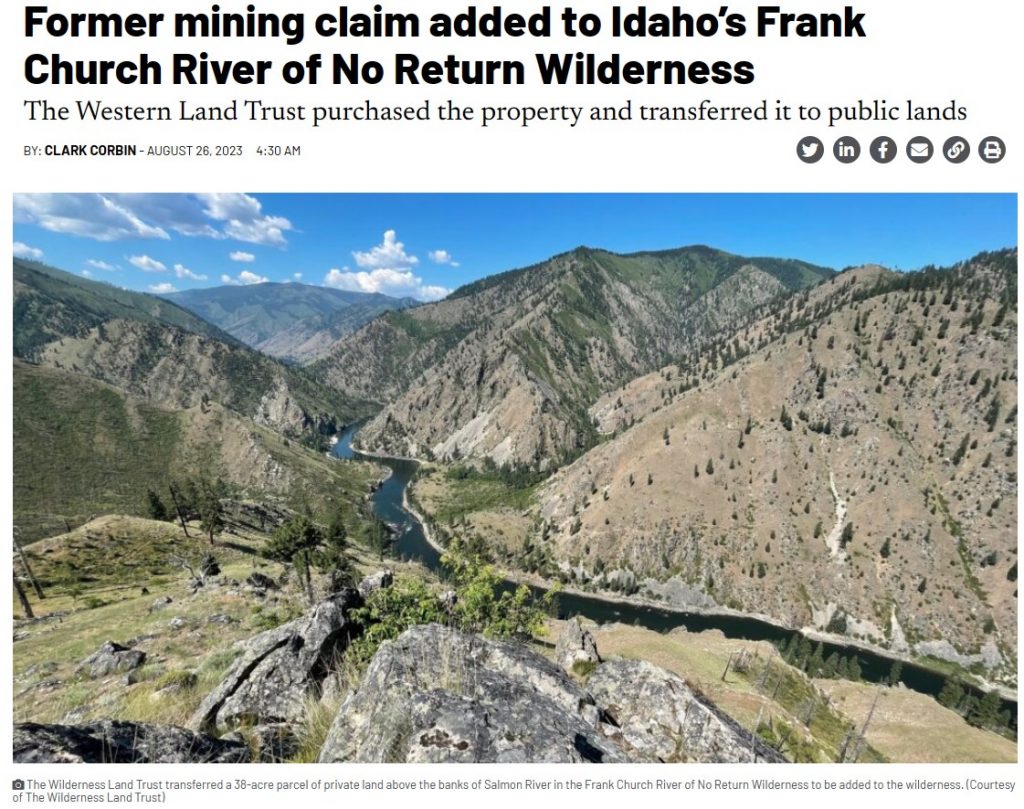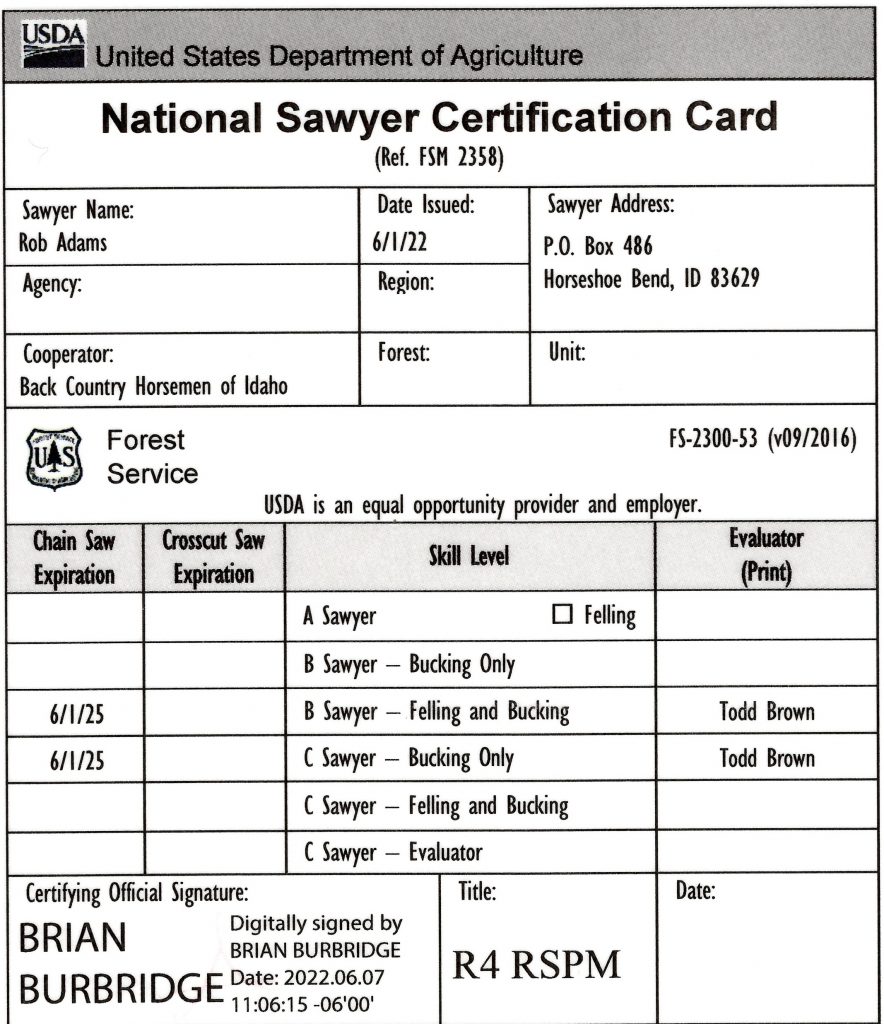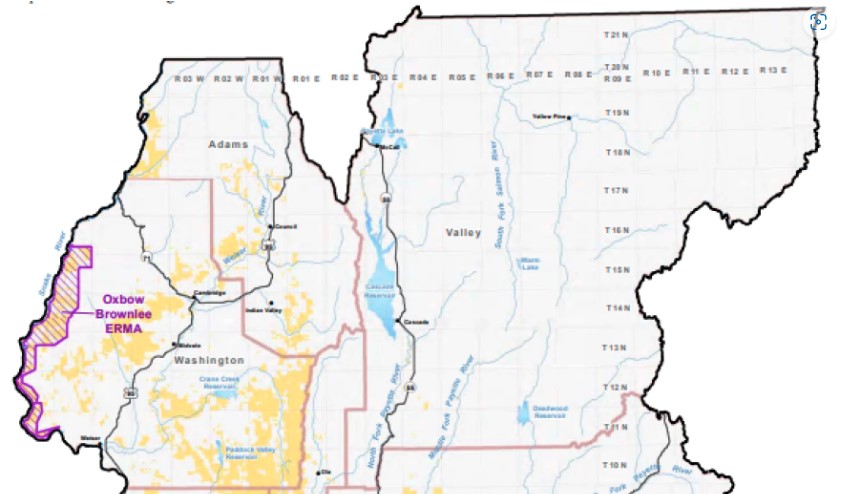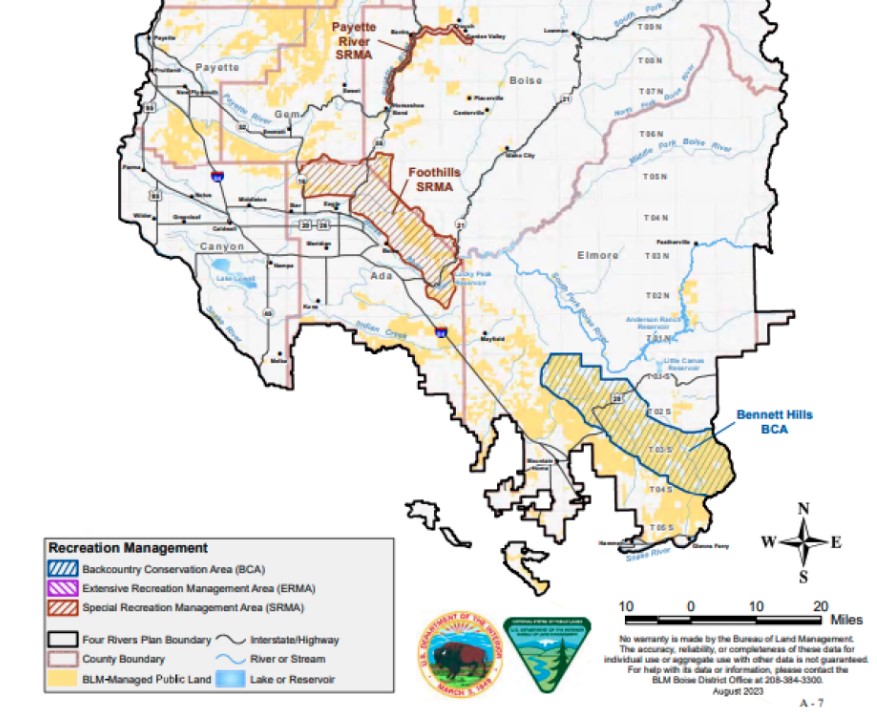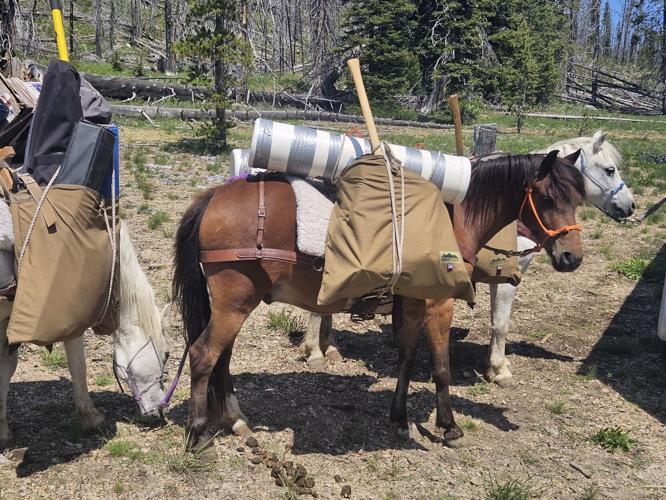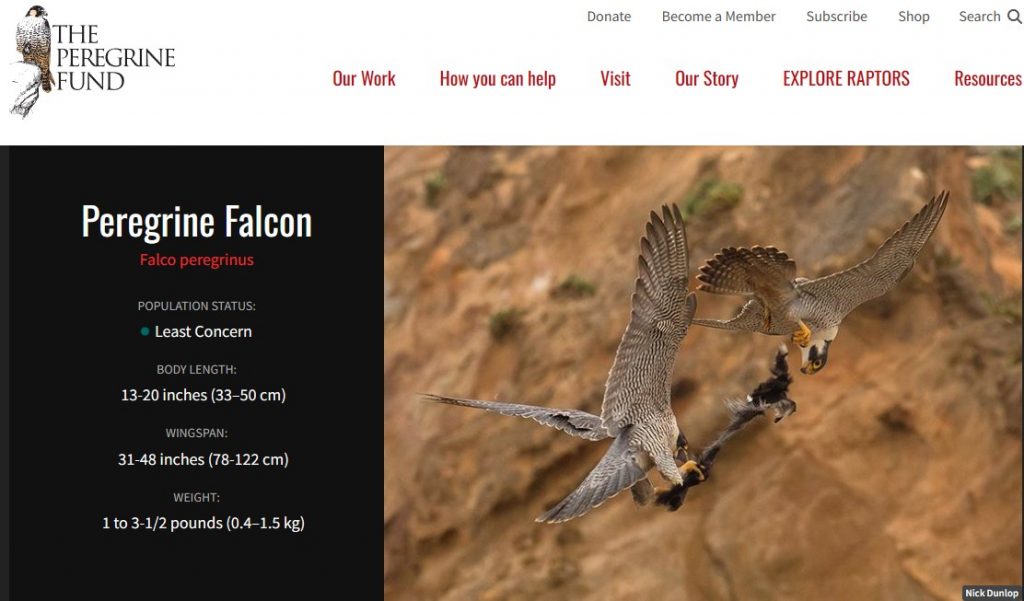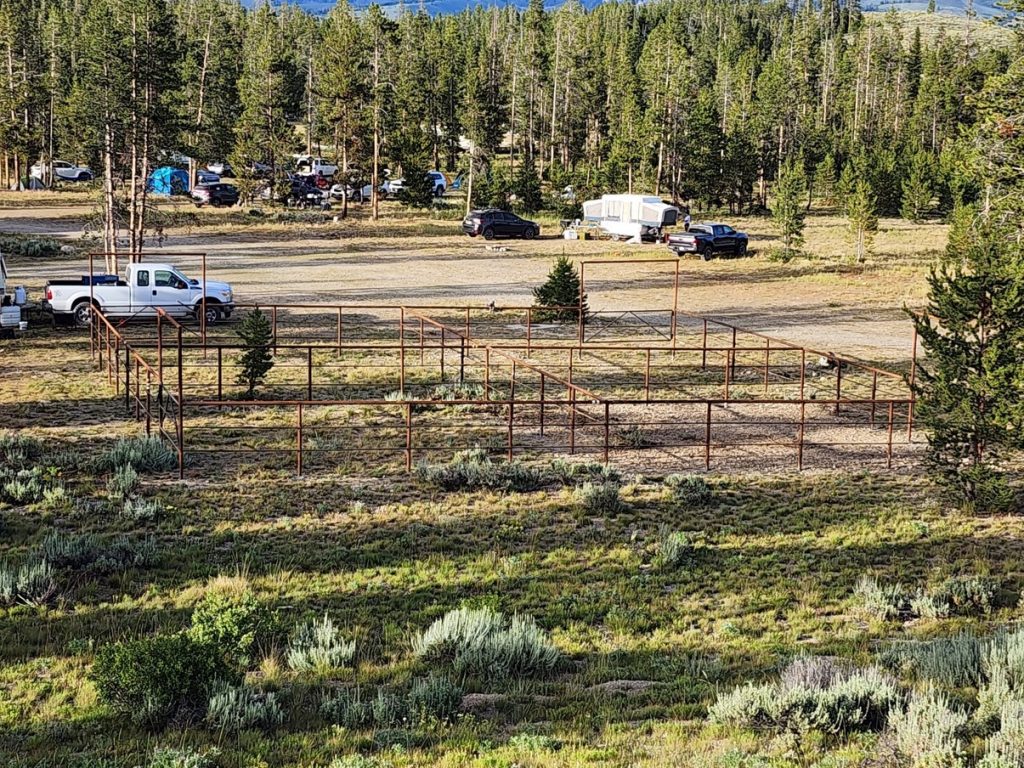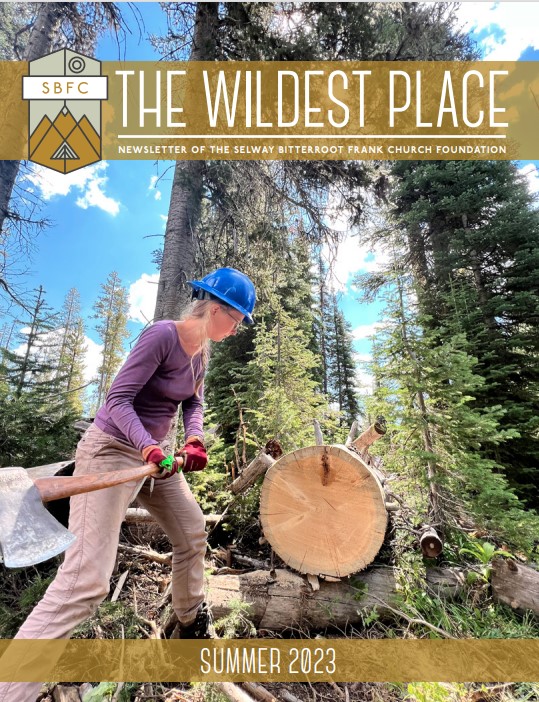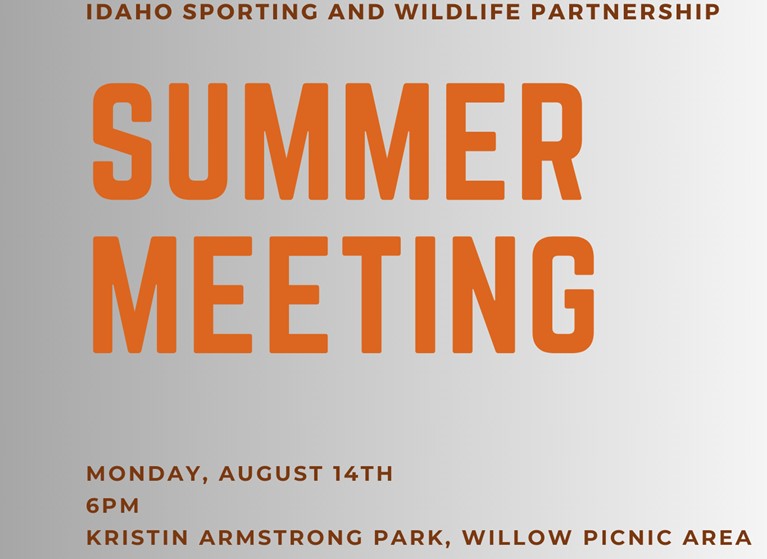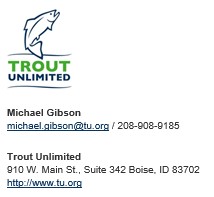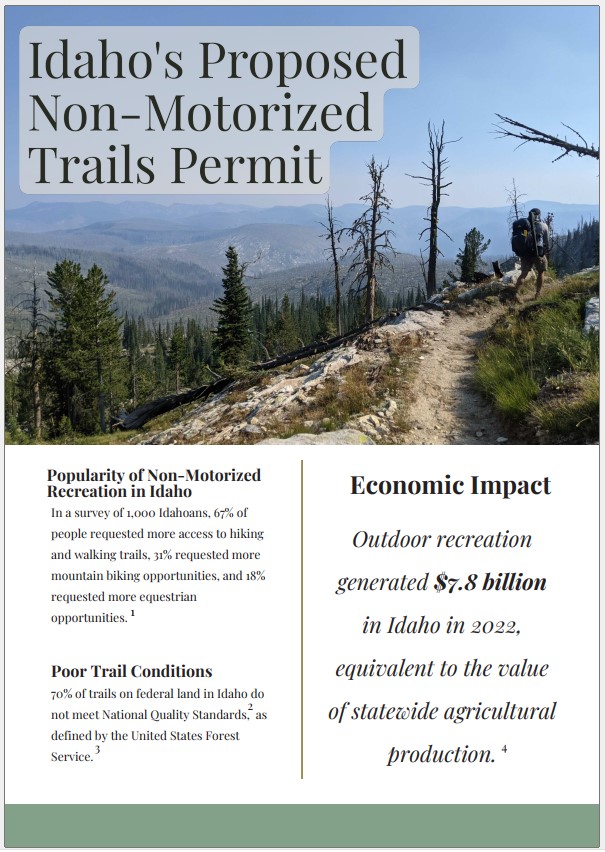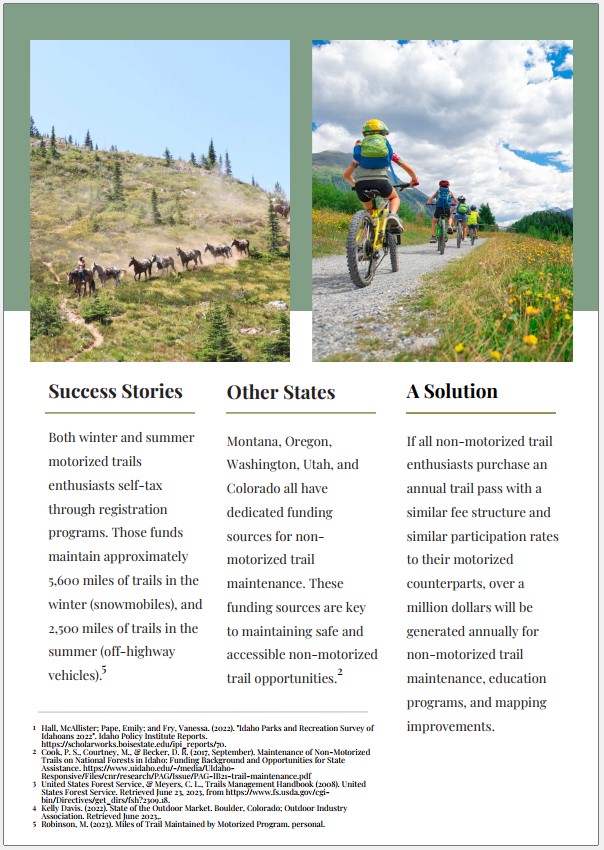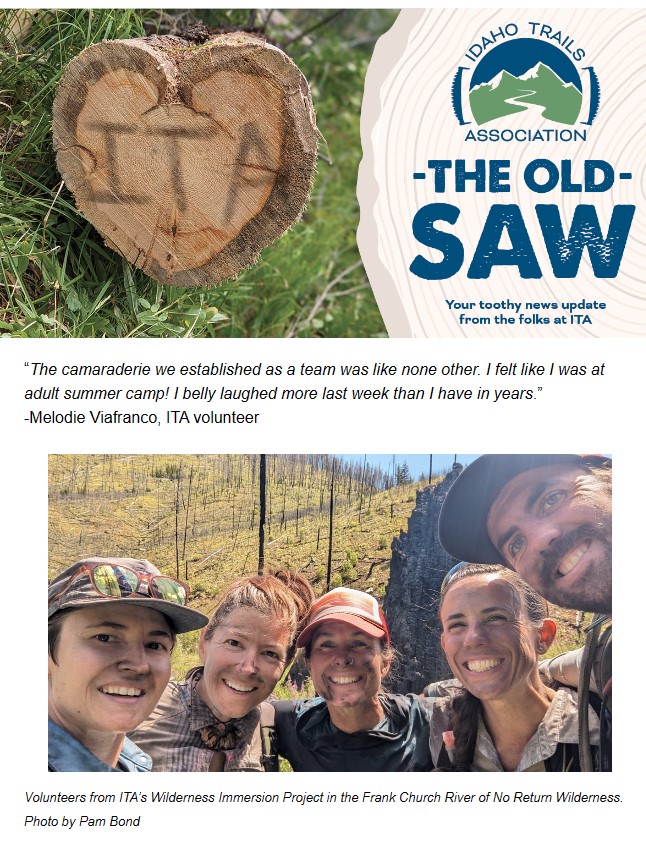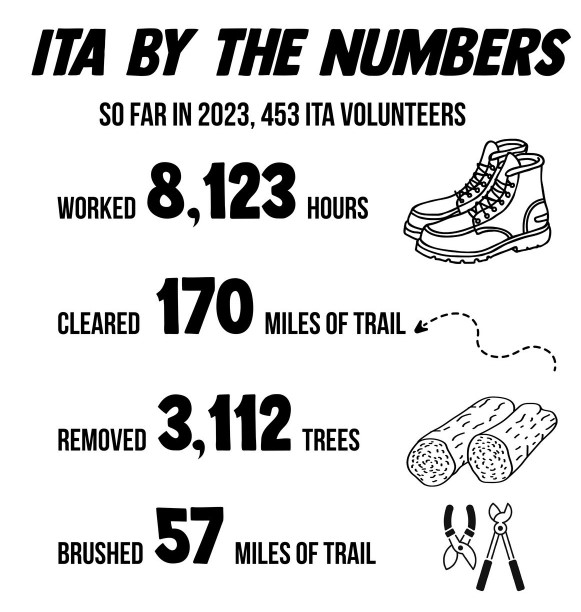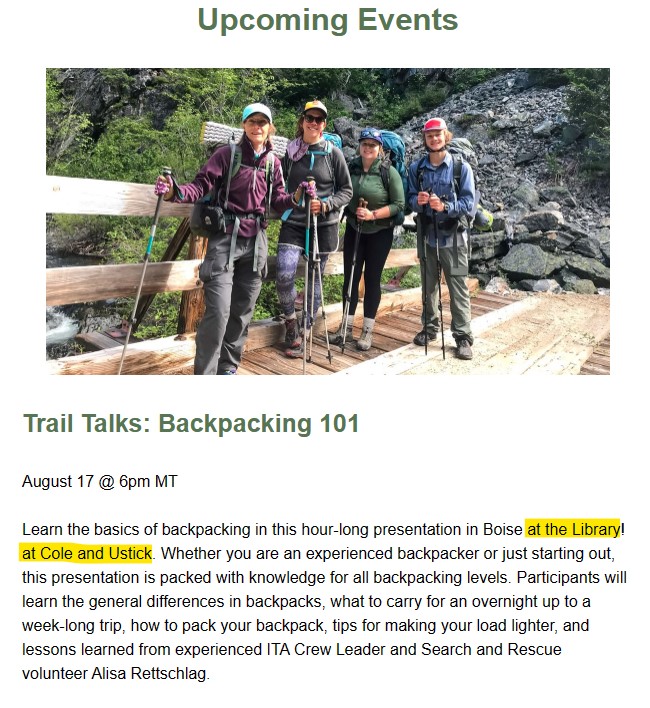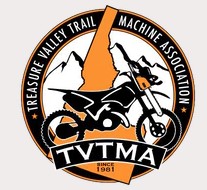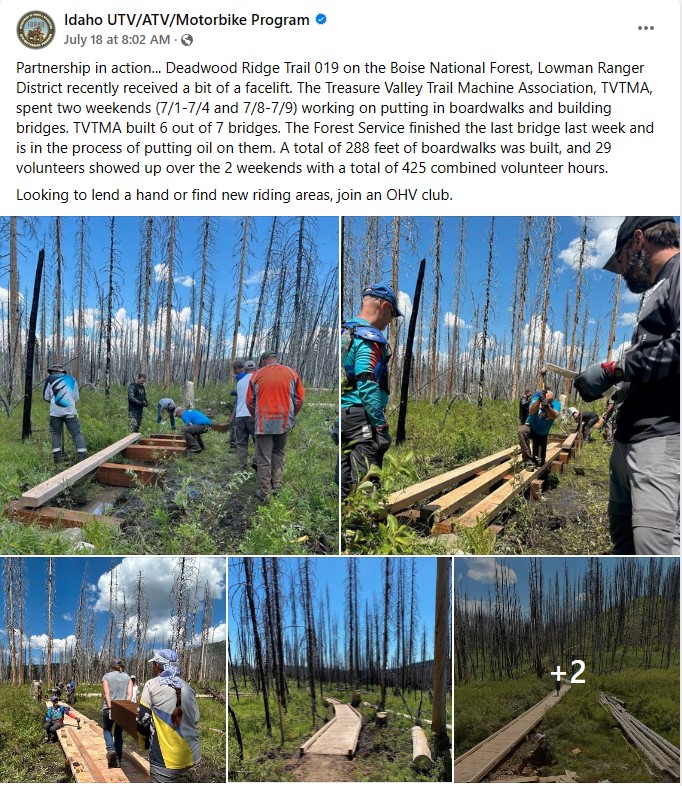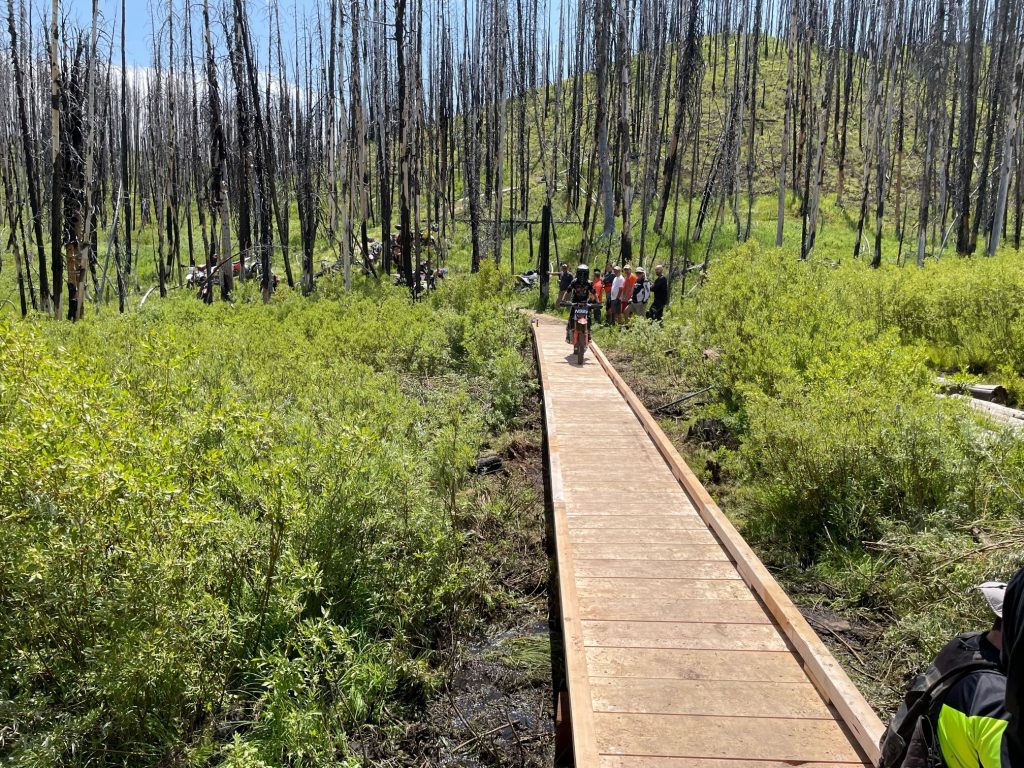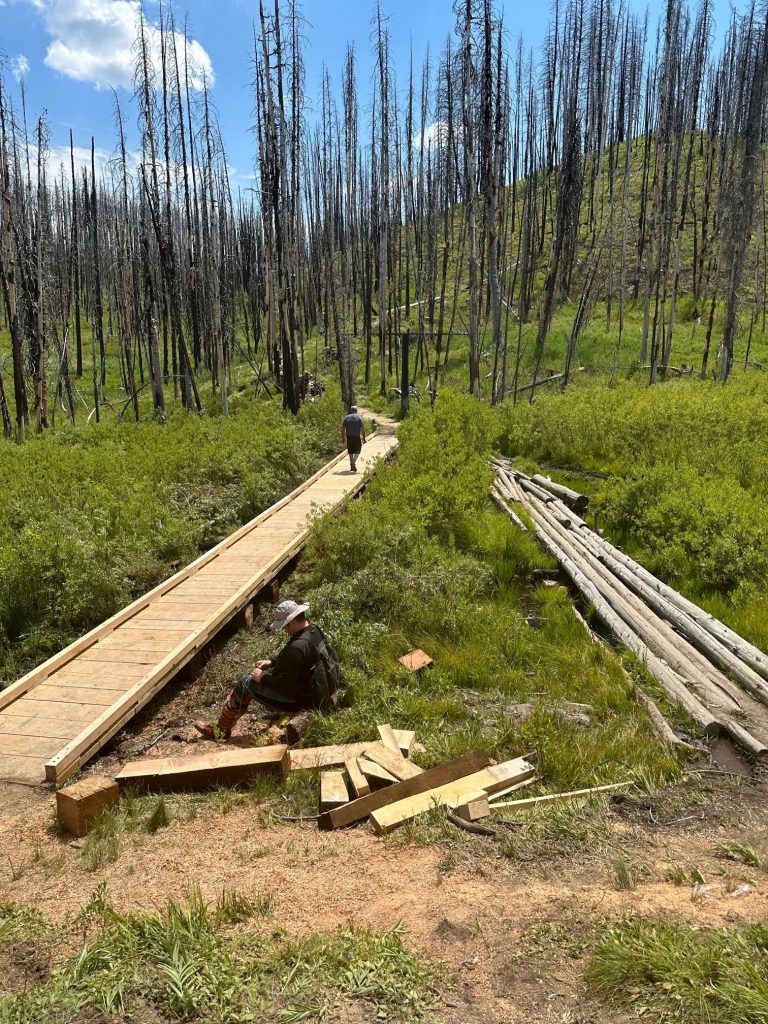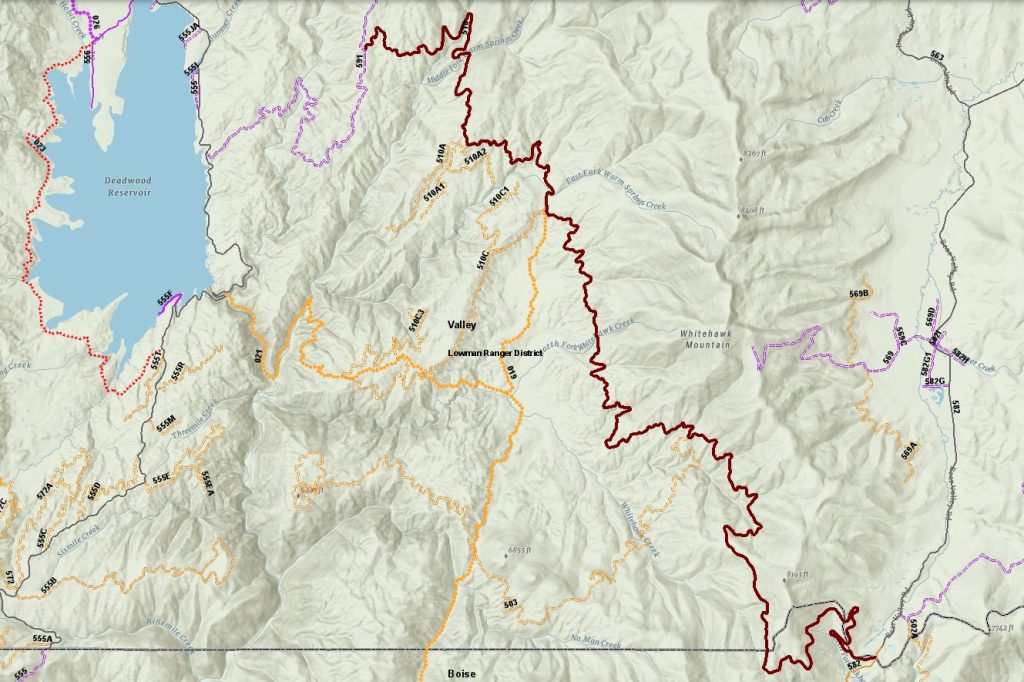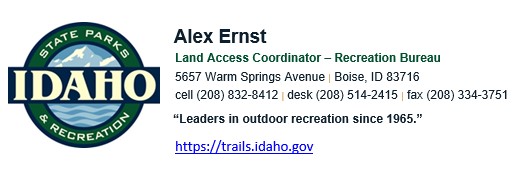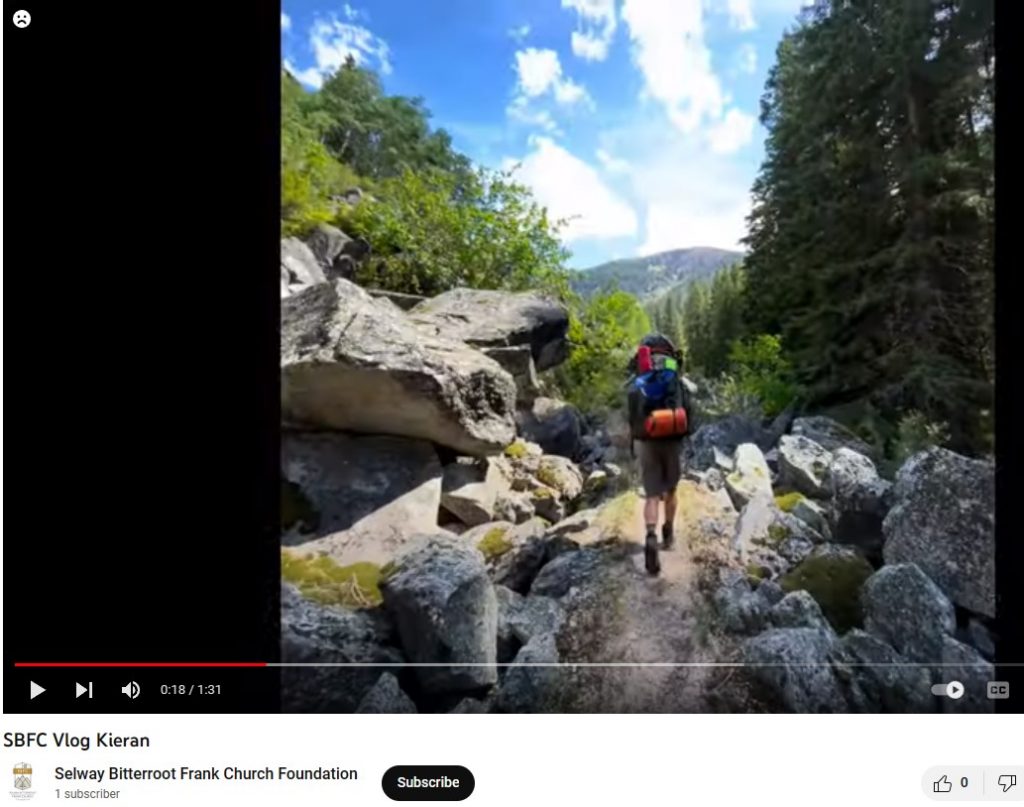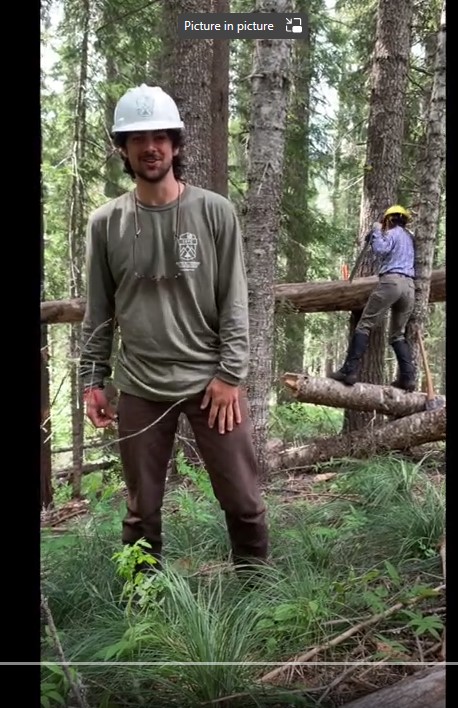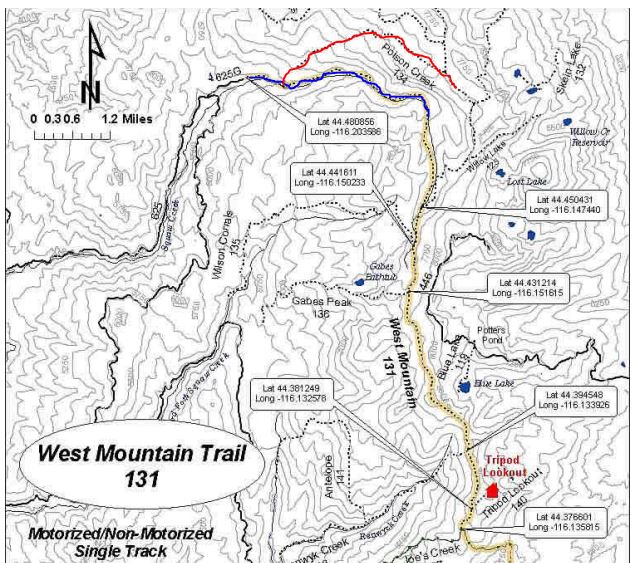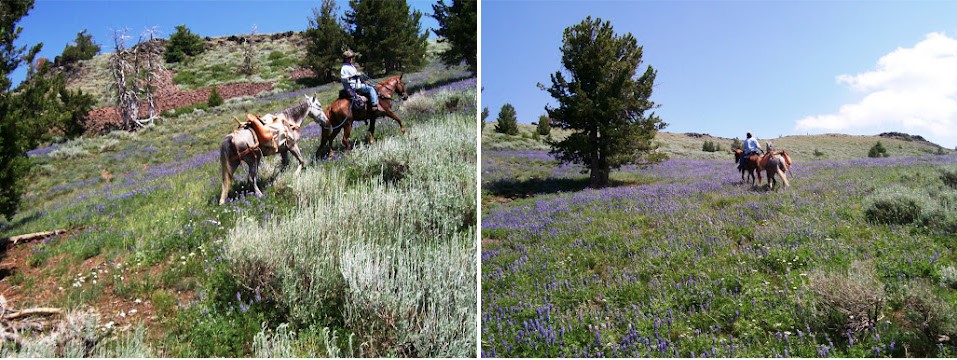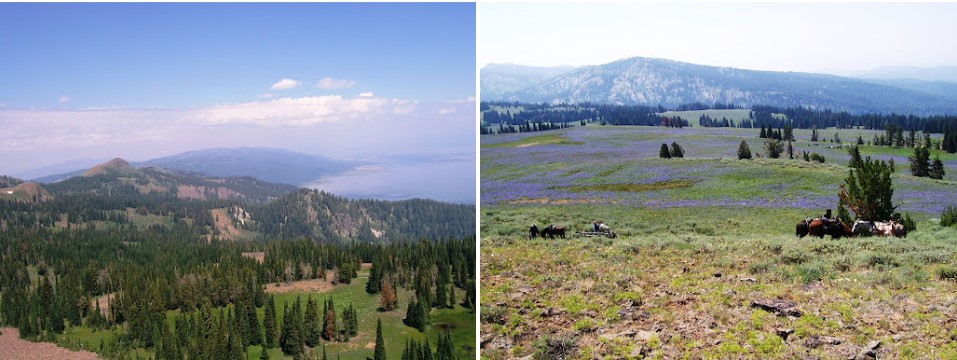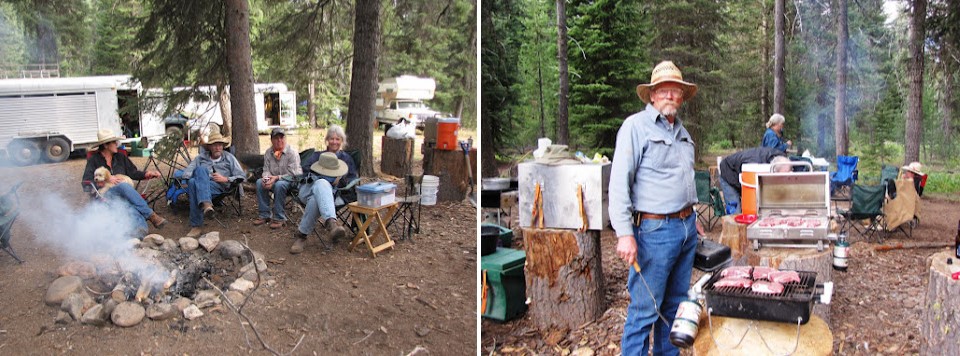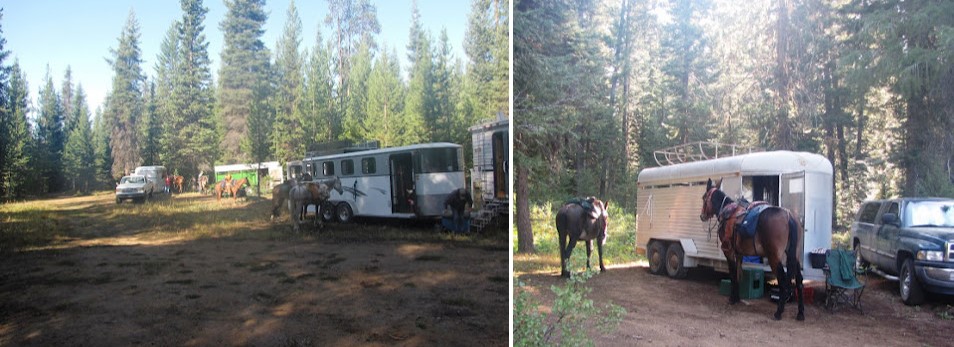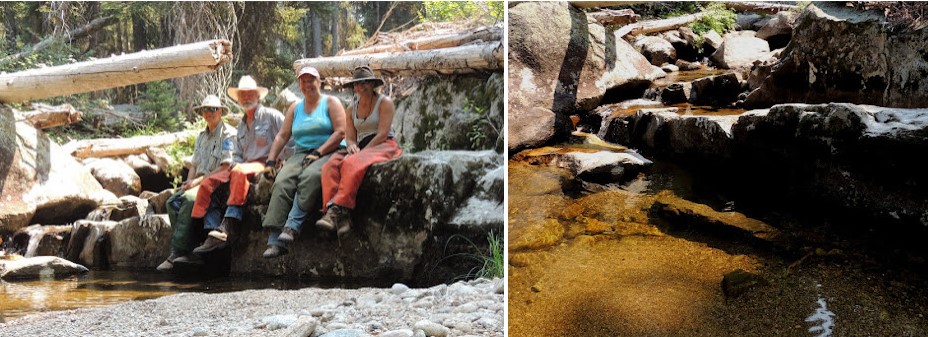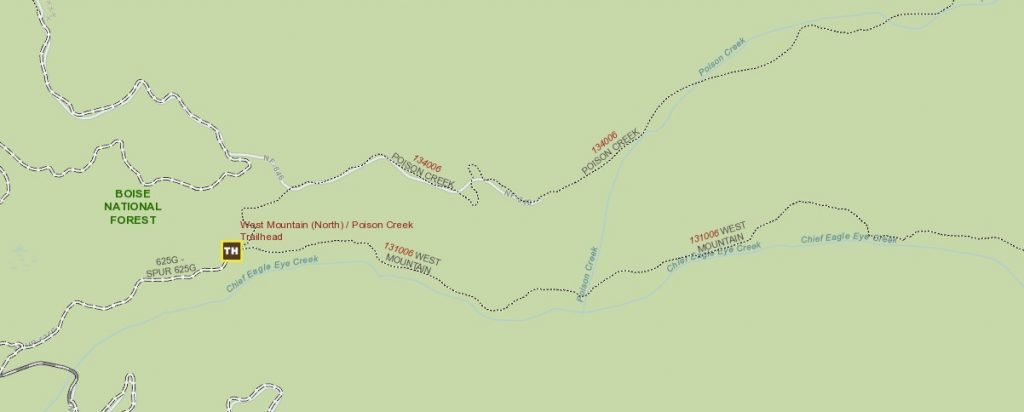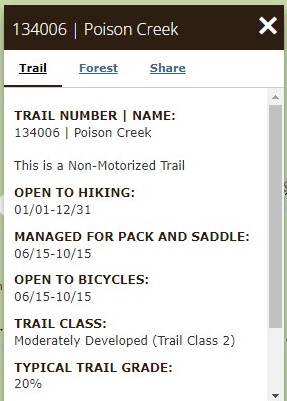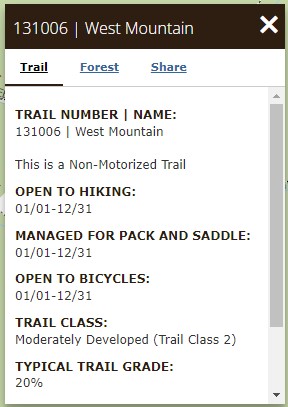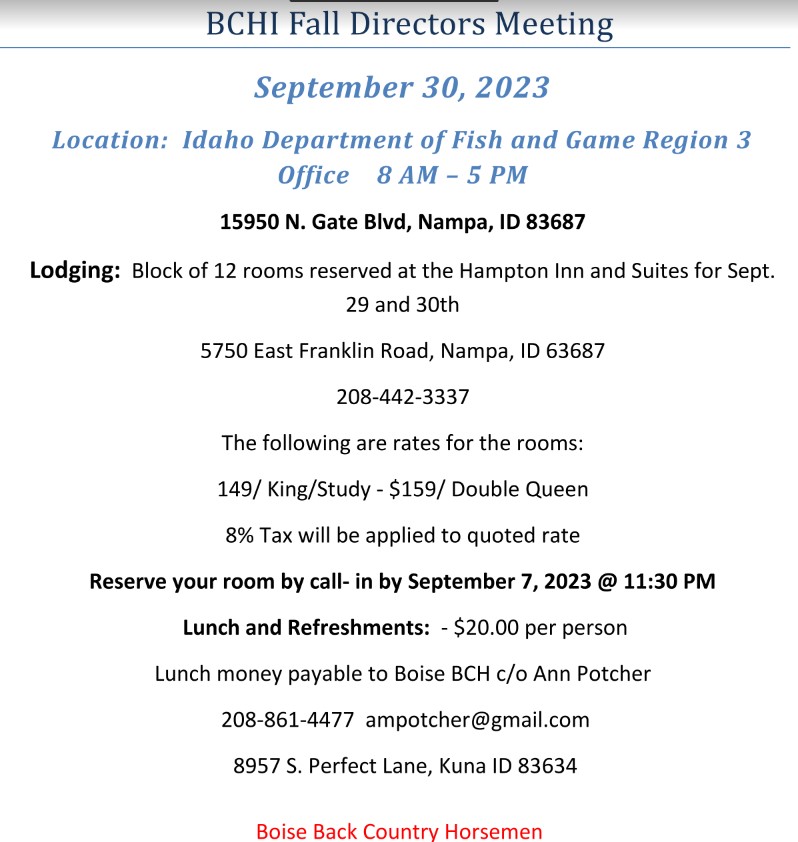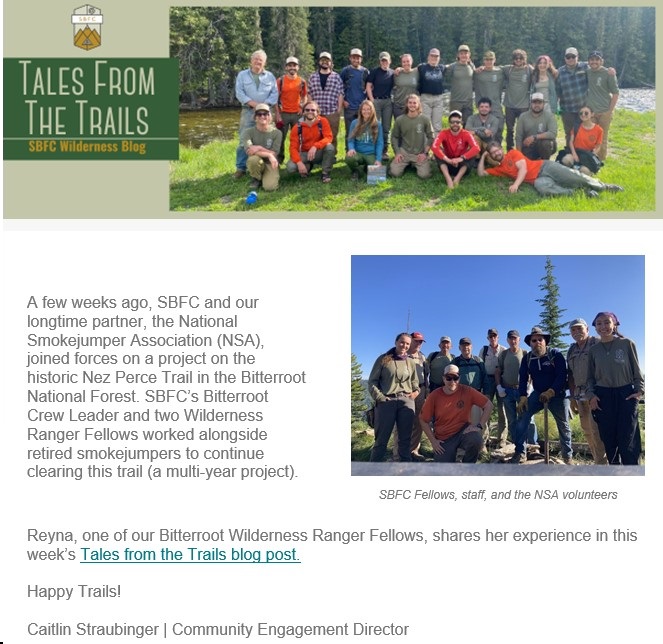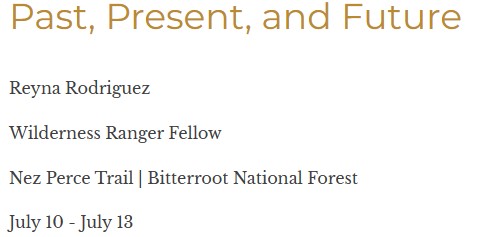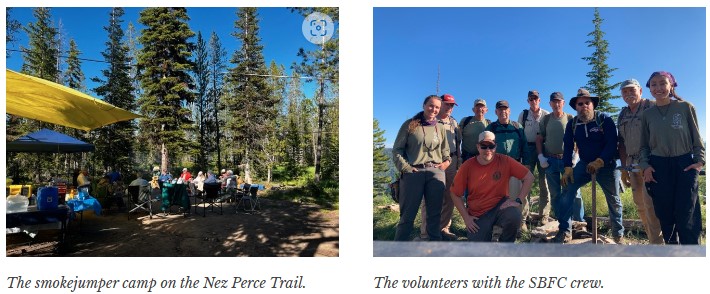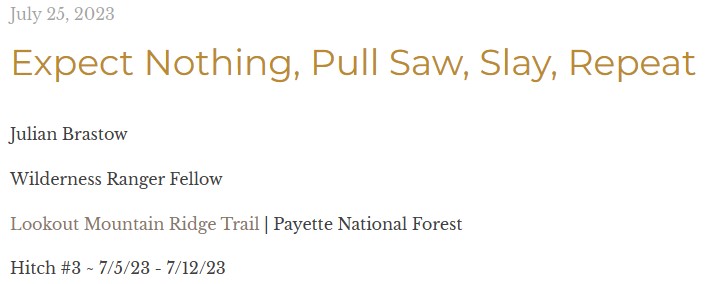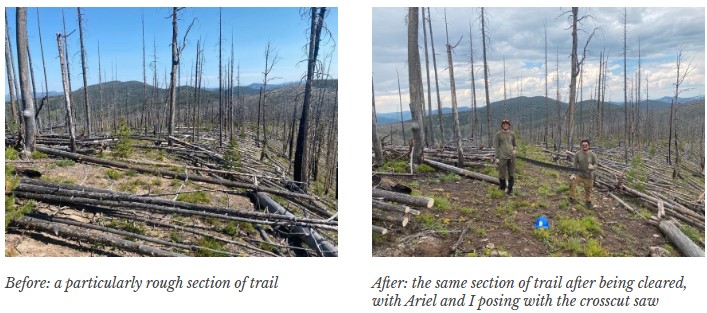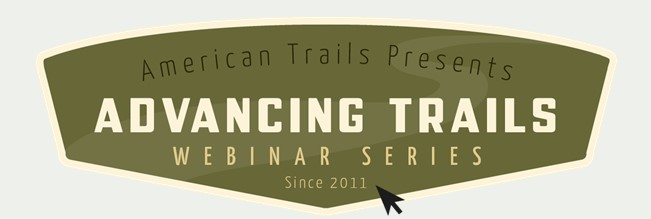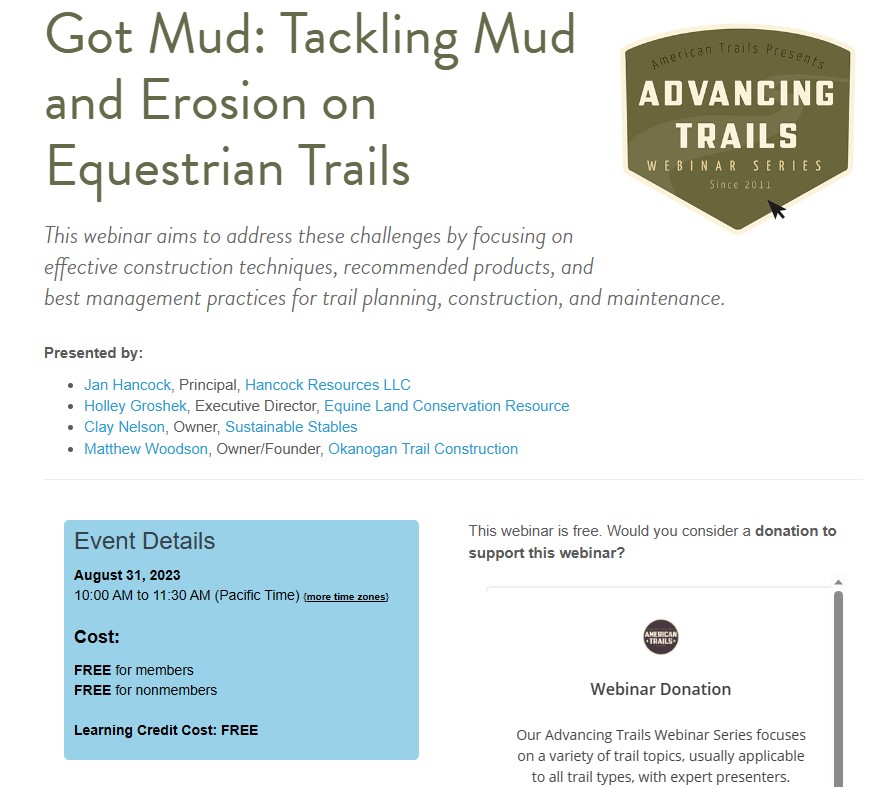The largest wilderness area in the Lower 48 got a little bit bigger in Idaho this month after The Wilderness Land Trust purchased a former mining claim and transferred it to public ownership.
In 2021, the 501(c)3 Wilderness Land Trust purchased the 38-acre Surprise Lode property within the Frank Church River of No Return Wilderness in Central Idaho from a private owner, Margosia Jadkowski, The Wilderness Land Trust’s director of marketing and communications, said in a telephone interview.
The property is located above the banks of the Salmon River, about 25 miles from the Vinegar Creek Launch. The land was considered an inholding, which is private property located within the wilderness that does not receive the same protections as the wilderness itself. Such private properties within wilderness areas often exist because the land was owned privately or used for mining before the surrounding wilderness was designated and protected, Jadkowski said.
By purchasing the land and selling it to the U.S. Forest Service, the land has become part of the Frank Church River of No Return Wilderness and will be protected from development, logging, mining and the use of motorized vehicles, Jadkowski said.
She did not disclose the financial terms of the deal.
“The Frank Church is a really spectacular place,” Jadkowski said. “It is the largest wilderness area in the Lower 48. It’s incredibly rugged country, and it’s really beautiful. The Salmon River is at the heart of the Frank Church, and it’s a wild and scenic river. It’s quite legendary in terms of rafting and fishing, and it has hundreds of miles of trails as well.”
The Frank Church River of No Return Wilderness encompasses about 2.4 million acres in Central Idaho and was protected by Congress in 1980. The wilderness is home to the Salmon River Canyon, which is deeper than the Grand Canyon in Arizona.
The wilderness was renamed in honor of the late U.S. Sen. Frank Church, D-Idaho, who sponsored the Wilderness Act of 1964.
How does transferring private property to public lands work in Idaho?
The Wilderness Land Trust is a Montana-based nonprofit organization that works to acquire private land inside of wilderness areas and transfer it to public ownership.
In Idaho, The Wilderness Land Trust has transferred seven such properties to public ownership, including the Painter Mine, a 37-acre property that borders the Surprise Lode in the Frank Church River of No Return Wilderness. The Wilderness Land Trust has also acquired and transferred the last remaining private inholdings in the Hells Canyon Wilderness and the North Fork Owyhee Wilderness, the trust said.
The trust relies on donations and foundation funding to buy properties from willing landowners. The parties selling the land receive fair market value for their land based on an appraisal, Jadkowski said. The sellers are eligible for a tax deduction and have the benefit of knowing the land will be protected permanently.
After The Wilderness Land Trust acquires a property, the trust facilitates working with the federal agency to transfer the property to public ownership. Often the process involves surveying land boundaries, addressing titles and mineral rights, closing mine shafts or removing structures and restoring the property to a wilderness state.
“A lot of times it might take three to five years to complete the transfer process, which is where we come in as a nonprofit and a partner with the federal agency,” Jadkowski said. “We will hold the property in the meantime until the agency goes through the process of accepting it.”
More information about the process for donating property within a wilderness area is available on The Wilderness Land Trust’s website.
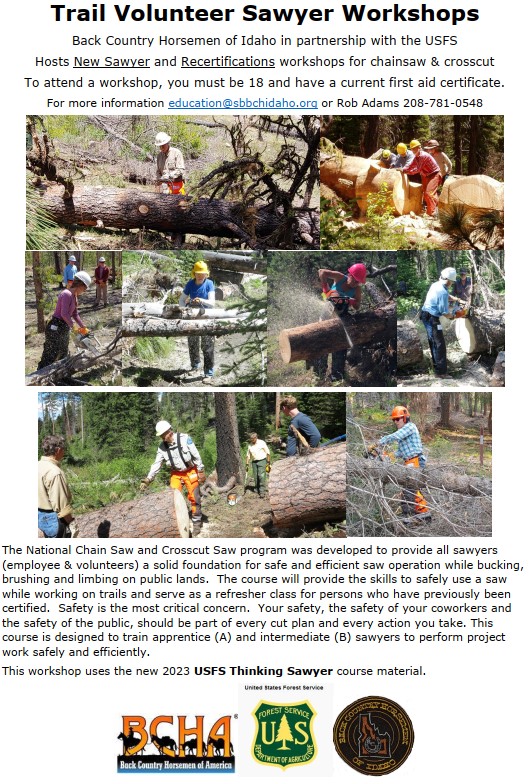 Trail Volunteer Sawyer Workshops-DTS
Trail Volunteer Sawyer Workshops-DTS
Dates: Classroom September 30, 2023 / Field Day October 1, 2023
Workshop information: Classroom / Field Day
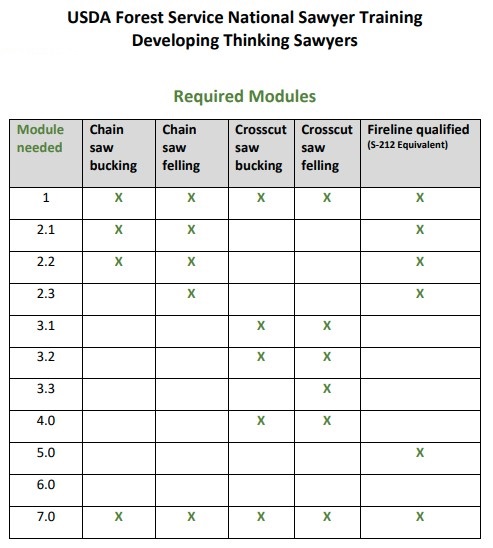
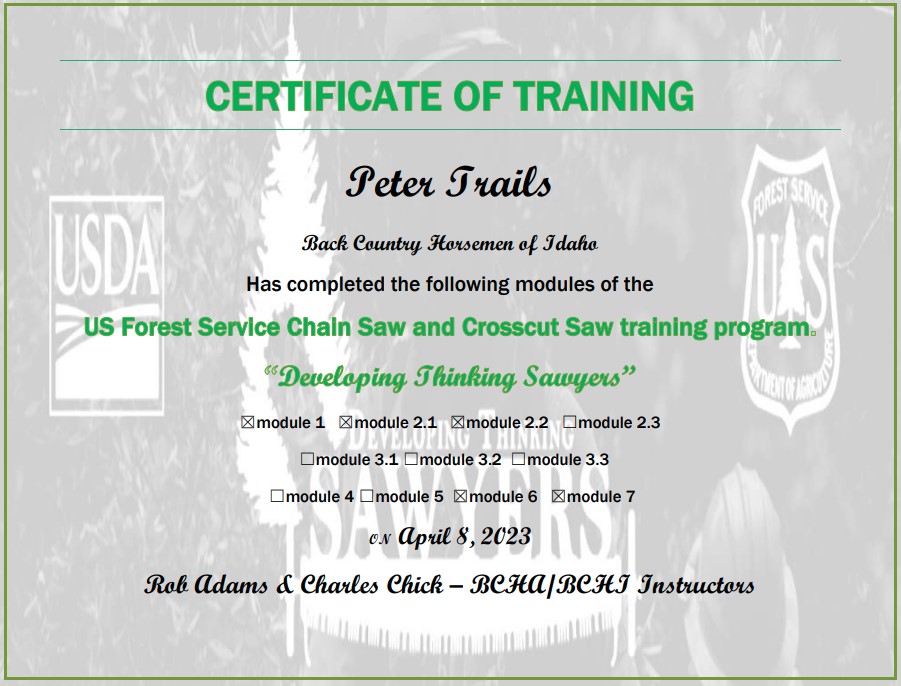
More than 120,000 acres set aside in Idaho as conservation area
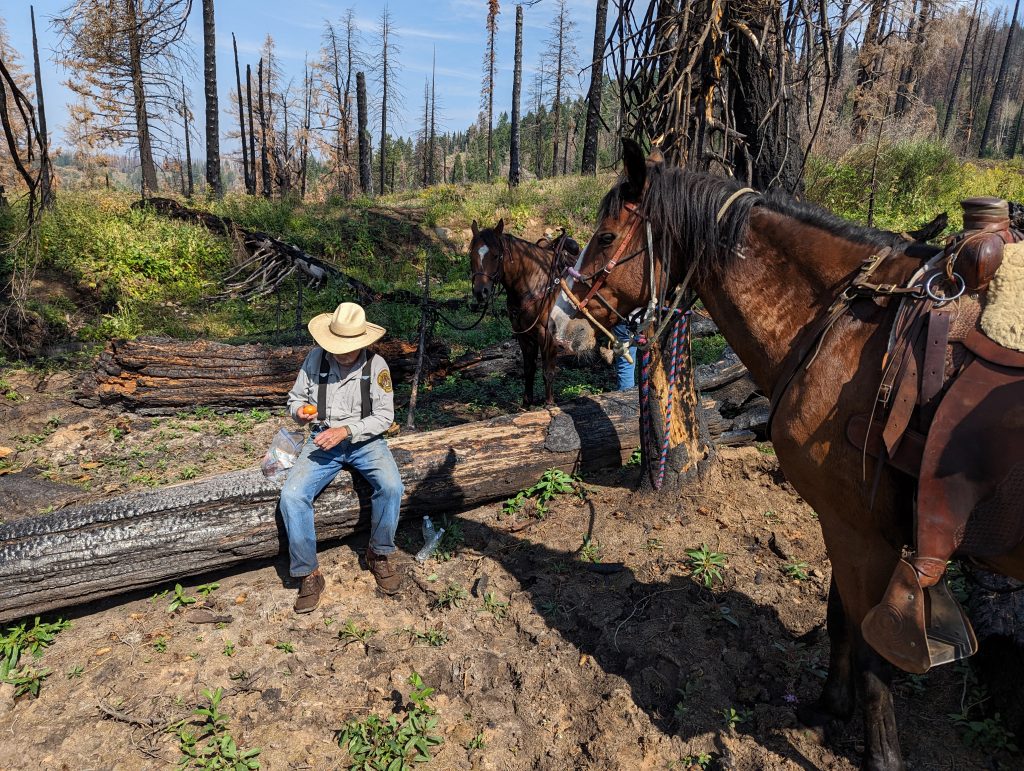
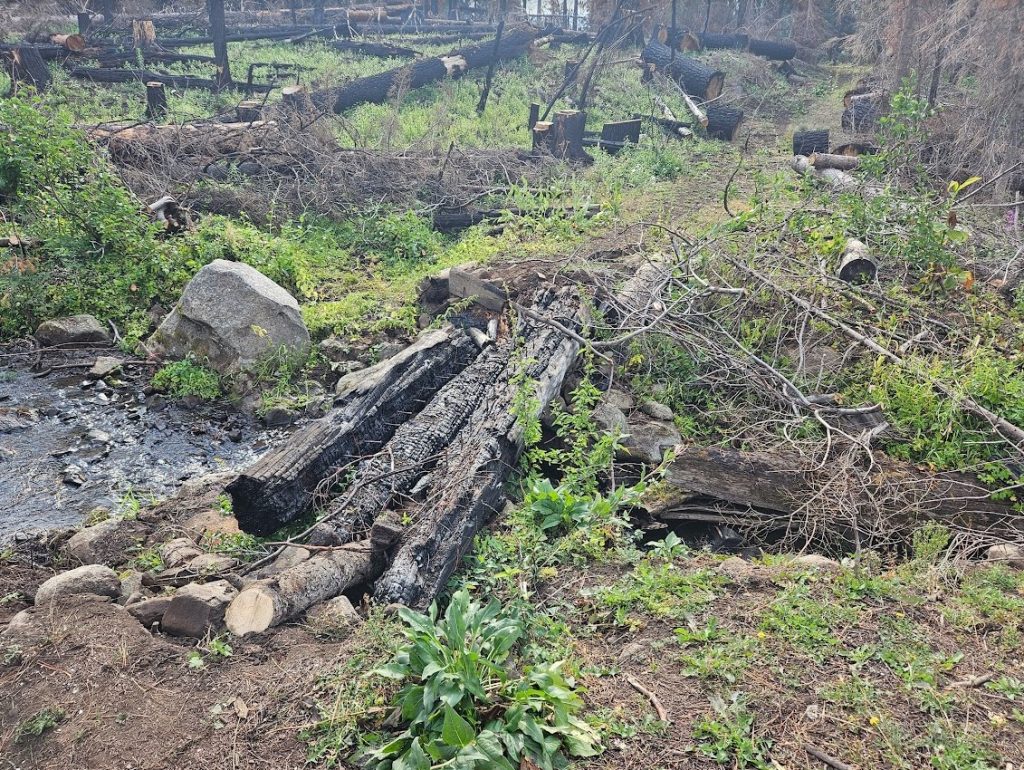 This picture is of the bridge that once crossed Pole Creek, now it is just three charged logs.
This picture is of the bridge that once crossed Pole Creek, now it is just three charged logs.
To see pictures from the project CLICK HERE
The Squaw Butte Chapter of Back Country Horseman of Idaho spend a lot of summer weekends doing trail or trailhead work in the mountains, or providing pack support for other volunteer trail crews. In July some members provided the pack support to a trail crew out of the Moscow/Pullman area spending a week cutting trees on trails in the Frank Chuck Wilderness.
Dan Waugh, of the Squaw Butte Chapter was the lead packer for the group and provided the following account of the trip back out of the Wilderness.
“Picked up the Selway Bitterroot Frank Church Foundation trail crew. They did an amazing job clearing over 5 miles and cutting more than 550 trees with a crosscut saw. If you haven’t ran one then you wouldn’t understand the task of this. But 3 crosscut teams can get to work!
The morning of the pack out was cool and wet and came early. Thank goodness for good hot coffee. We had the seven pack animals and two riding horses saddled and ready to go in about an hour. The ride in was great and without issue. The trail was wet so zero dust which is always a blessing. However, the bogs were deeper and sloppier than last week.
Did you know?
- The Peregrine Falcon is famous for its fast flying. Biologists have clocked it diving at speeds of over 200 mph. That’s about as fast as a race car goes!
- These falcons have adapted well to life in large cities, where they feed on birds like pigeons and starlings, and nest on the ledges of tall buildings.
- Like many raptors, Peregrine Falcon females are larger than the males.
- The Peregrine Falcon was removed from the Endangered Species list in 1999, thanks to efforts by The Peregrine Fund and many other organizations and individuals.
Where they live
From Morocco to Malaysia, Greenland to Greece, Australia to Argentina, and India to Iraq, Peregrine Falcons live and breed on every continent in the world except Antarctica. They are strong, efficient flyers and skilled at catching a variety of prey from small songbirds to large ducks. This versatility allows them to live in almost any type of climate and habitat – and they do!
Deserts, seashores, mangroves, wetlands, tundra, grasslands, dry forests, scrubland, and craggy mountains are places one might find a Peregrine Falcon. The most common factor among these different locations is the presence of good nesting habitat. These falcons like to nest in high cliffs, but in cities, Peregrine Falcons use tall buildings or bridges instead. As in many urban settings, a resident falcon family returns from migration each spring to raise young on the ledge of a tall building in downtown Boise, Idaho.
What they do
Among the most impressive birds to watch hunt, Peregrine Falcons are known for their high speeds, impressive aerial acrobatics, and unmistakable grace. But Peregrine Falcons not only fly fast, some populations fly incredibly long distances, too. In the northern part of their range, Peregrine Falcons are migratory, which means they travel from their breeding grounds to non-breeding grounds and back every year. Some of these individuals travel from the Arctic nearly to Antarctica, making a yearly round trip journey of more than 20,000 miles. That would be like crossing the entire United States seven times in one year!
Peregrine Falcons that live closer to the equator tend not to migrate. This makes sense if you think about one definition of migration: the seasonal movement from one area to another for the purpose of finding food or to reproduce, usually triggered by a change in the weather. Since temperatures along the equator are not as extreme as in the northern and southern regions of the world, there tends to be more year-round prey. With more available prey, there is no reason for a Peregrine Falcon to leave its home. Even when they are raising young, the tropical regions of the world usually provide them with enough food to raise a healthy family.
Perhaps because of their amazing flying and hunting skills, Peregrine Falcons have had cultural significance for humans throughout history. To this day, they are still one of the most popular birds in the sport of falconry, and in ancient times they were considered the birds of royalty. Today, Peregrine Falcons that are trained as falconry birds are sometimes flown by their trainers at airports to scare off ducks and other birds that could collide with a plane and cause accidents. These falcons are helping to keep our skies safe! The Peregrine Falcon also appears on the U.S. Idaho state quarter.
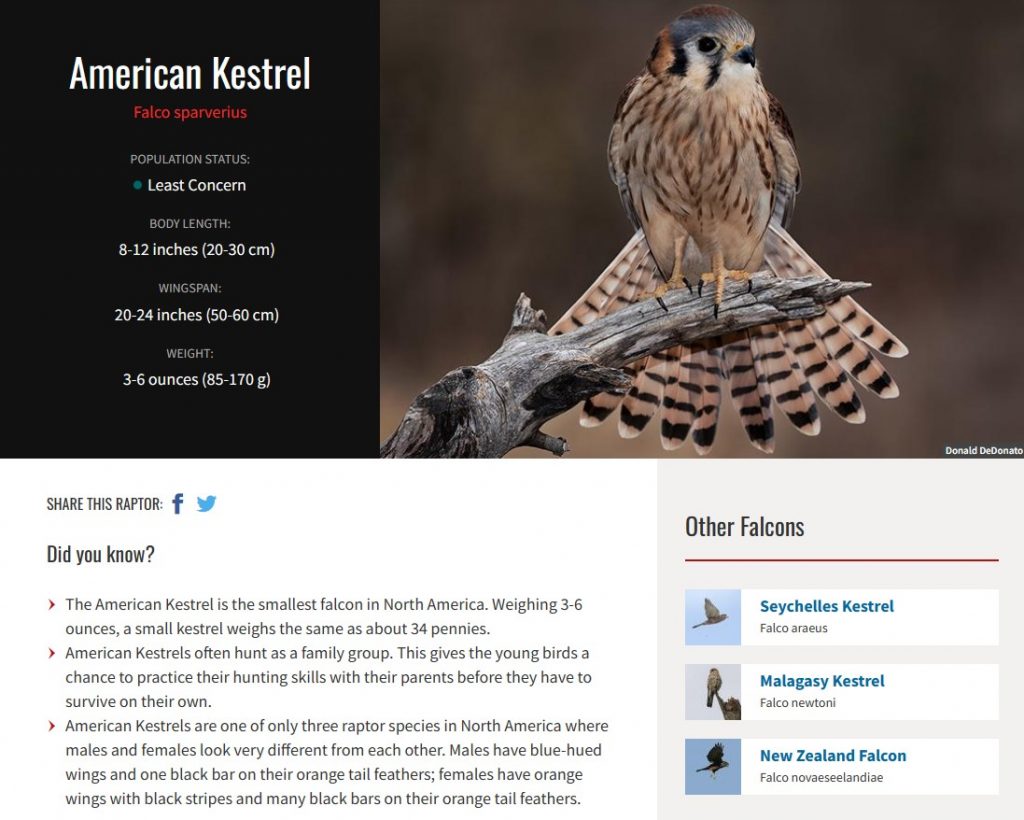
Submitted by Lisa Griffith
READ FULL REPORT: Report out on the Tin Cup project
Suggested by Marc and Tyler Kelly
Tyler’s Boy Scout Troop is working on their Wilderness Survival Merit Badge.
FIRST AID AND OUTDOOR RECREATION
Written by Steve Belcher
It’s healthy to get outside and enjoy hobbies like hiking, biking, climbing, riding horses, and camping. However, all of these outdoor activities come with potential risks and challenges, so it’s essential for anyone who plans to spend plenty of time outside to understand the basics of outdoor first aid. The principles of first aid are the same no matter where you are, but outdoors, the practical application can look very different. You’ll need to be resourceful enough to both bring what you might need and use what you have at hand in order to stabilize someone’s condition in an emergency.
Wilderness First Aid Basics
Being well-versed in wilderness first aid is an important life skill if you plan to go on outdoor adventures. Not only does it help you become more self-sufficient and capable, but it can be a life-saving skill in certain situations. The majority of outdoor injuries are minor and easily treatable with a first aid kit, but that isn’t always the case. In some situations, knowing first aid can make a world of difference, especially since there aren’t any emergency responders close by in the wilderness. You don’t need to be a professional doctor or nurse, but you do need to have the equipment and the knowledge to be able to keep someone’s condition from worsening until you can get help.
First Aid Kits
No matter where you go, you should always have a first aid kit handy. Stock your kit with your trip in mind, thinking about the types of situations you could encounter as well as how long you’ll be gone. The longer your trip will be, the bigger your kit should be. The kit should be well-organized so that everything you need is easy to find; you don’t want to waste precious time rummaging around for what you need in an emergency situation. Consider using different-colored containers and clear labels to organize your supplies. You should also make sure that everything is packed to withstand the elements.
Wounds
Wounds can range in severity from minor scrapes to serious injuries. Without proper care, there’s a risk of infection or even death. When someone is wounded, the basic steps of wound care are to get the bleeding under control, do what you can to prevent infection, and take measures to promote proper healing. You’ll want to bring along supplies such as bandages of different sizes, gauze, antiseptic, and antibiotic ointment.
Dehydration and Heat Exhaustion
When you’re out on the trail, it’s not always easy to remember to keep drinking water like you should, and overexposure to the sun is a real possibility. When someone gets overheated, dehydration and heat stroke are real possibilities, and both of these conditions can endanger your health. Heat stroke occurs when people don’t sweat enough to lower their body temperature, and it’s incredibly common in people who are outdoors a lot. It can often come on rapidly, and it requires immediate medical attention. Always bring more water than you think you’ll need on your trip. If someone becomes overheated, find or create a shady spot where the person can rest, give them water, and use some of the water you have on hand on their skin to help cool them down. Then, head back to civilization so the person can get professional medical treatment.
Burns
If someone gets burned in the wilderness, remember the four C’s: Cool it, clean it, cover it, and call for help. Cool the burn using cool water; the longer heat stays in the body tissue, the deeper the burn becomes. Then, clean the burn with soap and water. Cover the burned area with antibacterial ointment, then apply a non-stick bandage to protect the burn. If you don’t have a bandage, cover the burn with a makeshift bandage using whatever you have, such as a clean shirt or a sock; it’s crucial to keep more bacteria in the environment from getting into the wound. Once the burn is covered, get help from a professional as soon as you can.
Strains, Sprains, and Broken Bones
Almost three-quarters of all non-fatal wilderness injuries are broken bones or sprains. It’s incredibly common to sprain an ankle on a steep trail or trip and fall on a limb, causing a broken bone. It can be hard to diagnose these injuries in the wilderness, but often, you can help to reduce greater injury by using the RICE method: rest, ice, compression, and elevation. Reduce the swelling by icing the area with anything you have on hand, whether that’s water from a stream, water from a bottle, or even snow. Compress the injured area with a bandage, bandanna, or clean clothes, but make sure you don’t tie it too tightly; you don’t want to cut off circulation. If you suspect a broken bone, apply a splint to immobilize the area. Elevate the injury above the heart, even if that requires you to sit down on a trail and let people pass you by. This should be done for at least 20 minutes before attempting to have the injured person move again. It may be necessary to use a hiking pole or big stick to help with balance or bear some weight while you make your way back to civilization. RICE should be repeated every two hours on the walk back to help reduce the seriousness of the injury.
CPR
In the event of cardiac arrest in the wilderness, chest compressions should be initiated right away. However, it’s important to be realistic about the situation, given the circumstances you may be in. For instance, usually, you should keep going with CPR until help arrives or until you’re too exhausted to continue. But if you’re hours or even days away from civilization, you should know that the effectiveness of CPR decreases rapidly after 20 to 30 minutes.
Hypothermia
Hypothermia due to environmental exposure is common in wilderness settings. Any temperature below 98.6 degrees Fahrenheit can be linked to hypothermia, but it’s especially common in below-freezing temperatures. It’s also possible to get hypothermia in temperatures around 40 degrees if you’re exposed to heavy wind and rain. It’s easy to lose body heat, especially for people who aren’t dressed correctly, people who get wet by accident, people who are dehydrated or have poor food intake, and people who are fatigued. The severity of hypothermia (mild, moderate, or severe) can be assessed by asking the person questions that require higher reasoning; seeing if their shivering can be stopped voluntarily; checking to see whether or not you can get a pulse on their wrist (if you can’t, that may indicate a core body temperature lower than 86 degrees); and seeing whether the person can be taken out of the fetal position. Hypothermia can be treated by reducing heat loss by adding clothes or changing into dry clothes; adding fuel and fluids like hot liquids, carbs, and proteins; and getting the person warmth from a fire or another external heat source.
What to Do in an Outdoor Emergency
Knowing what can be done to help nurse somebody back to health using first aid is essential in an emergency, but it’s not the only thing you can do. Before you go on your trip, make sure that you’ll be able to summon help if you need it. For short trips close to civilization, bringing a fully charged phone may be sufficient. But if you’re heading farther afield, get a personal locator beacon. These devices can be activated in an emergency to send out a distress call by satellite. While you wait for help to arrive, do your best to stay calm and administer first aid as best as you can.
- Wilderness First Aid Basics
- Outdoor Safety
- First Aid and Travel Safety
- Wilderness and Remote First Aid Emergency Reference Guide
- Wilderness First Aid vs. First Aid at Home or at the Office
- Wilderness Survival: First Aid and Health
- Packing a Personal First Aid Kit
- What to Put in a Wilderness First Aid Kit
- How to Build a Hikers’ First Aid Kit
- Why Wilderness First Aid Matters
- Essential Items for an Outdoor First Aid Kit
- The Basics of Wilderness First Aid
- What You Should Put in Your Wilderness First Aid Kit
- Nine Things to Know About Wilderness First Aid
- Nursing Anywhere: What You Need to Know
Good Evening,
Just wanted to remind everyone of Tuesday’s meeting. We will have the horse council office open as well as zoom. I know it’s still a busy time of year for many. Below are the topics I am wishing to discuss, please see the attached documents for review. If you cannot attend and want to chat or share thoughts and ideas feel free to reach out to me.
1. Updated Info Graphic
2. Proposed Legislation
3. Proposed date of Oct 17th for the next trails summit at Gowen Field.
The Zoom link is below, also this is a recurring link so this link will continue to be the one to use.
Respectfully,
Dan Waugh
360-791-1591
Idaho Horse Council Administrator is inviting you to a scheduled Zoom meeting.
Funding Infogrpahic – July 18 draft
Draft legislation-Non motorized trail funding
Topic: IHC Idaho Non-Motorized Trails Initiative
Time: Aug 15, 2023 10:00 AM Mountain Time (US and Canada)
Every month on the Third Tue, 12 occurrence(s)
Aug 15, 2023 10:00 AM
Sep 19, 2023 10:00 AM
Oct 17, 2023 10:00 AM
Nov 21, 2023 10:00 AM
Dec 19, 2023 10:00 AM
Jan 16, 2024 10:00 AM
Feb 20, 2024 10:00 AM
Mar 19, 2024 10:00 AM
Apr 16, 2024 10:00 AM
May 21, 2024 10:00 AM
Jun 18, 2024 10:00 AM
Jul 16, 2024 10:00 AM
Please download and import the following iCalendar (.ics) files to your calendar system.
Join Zoom Meeting
https://us02web.zoom.us/j/88035040972?pwd=OERKMk1pT2dnWEFEVFRNMGJKRVhaUT09
Meeting ID: 880 3504 0972
Passcode: 225301
Find your local number: https://us02web.zoom.us/u/kevE8IGp8z
Several TVTMA members worked this project had been certified at the Thinking Sawyer Workshops lead by BCHI. This trail with its many boggy spots has been a notorious horse-swallower I’ve heard, not too good for bikes either. More areas to do since conditions have changed since the 2017 scoping finally implemented, but I think horse use is going to be much less risky now with the replacement and new puncheon at 7 sites.
Notably, the upper 3 miles of the trail above Whitehawk meadow that was impassible, blown-in for several years with endless deadfall, is now open at the hands of a number of your new or recertified students.
Your efforts are now multiplied in a measurable return to the users. Lots of folks are pretty pleased about this outcome and are looking at it is a template for future projects and partnering with FS to improve recreational access.
One of the details, left out for brevity, is that the northern-most portion of Tr019 –about 2.5 miles, had been inaccessible due to extensive deadfall for an unknown number of years. From its intersection with Tr021 at Whitehawk Basin to road 510, that trail is now cleared of deadfall, with new puncheons installed at planned sites, and now usable by all single-track users after years of being effectively “closed-and-stored” by nature. That’s worth celebrating.
Granted there’s more to do on other parts of the trail not covered by the original project scope, conditions having evolved since the original proposal (2017?) of the project now implemented. So we’ll look forward to working with the Forest and Lowman RD on continuing improvements along this popular trail and its interconnects. My understanding is that Mike Lindenfelser is working on trailhead sign replacements, and that will be an ongoing task to put a bow on this current effort.
JT Wagner and his crew of two seasonal and two interns should also be noted for their significant contribution to the timely and quality completion of the project. Their contribution was a force-multiplier and expediting factor, which we were not originally counting on when anticipating a three-weekend work plan.
Pictures from the 2023 Project
Trail Project – Saturday & Sunday August 19-20, 2023 ( Trail Project & Horse Camping)
Location: Chief Eagle Eye Creek (west mountain north), & Poison Creek West Mountain, North of Ola, ID
GPS USFS[131] USFS[134] MAP Pictures 2021 SC-2020 PC-2020
Work will concentrate on Poison Creek Trail – which needs extensive brushing)
Great horse camping area with some fun but challenging trails. Most people arrive at the camp site on Friday night.
Potluck meals Breakfast (Sat & Sun), Dinner (Sat) – Bring lunches, We will be working on Saturday with a short fun ride on Sunday!
Contact: Rob Adams 208-781-0548 projects@sbbchidaho.org
SIGN UP: https://www.supersaas.com/schedule/sbbchidaho/Squaw_Butte_Events
- August 3: Legacy Trails Grant Program: 2023 Pre-Application Overview
- August 10: Bridging the Gap Assessing, Empowering, and Engaging People with Disabilities in the Outdoors
- August 17: Creative Trails Programming through Public-Private Partnerships
- August 24: Porous Flexible Pavement, Asphalt, or Porous Asphalt: Lessons Learned for Multi-Use Trails in the District of Columbia
- August 31: Got Mud: Tackling Mud and Erosion on Equestrian Trail

